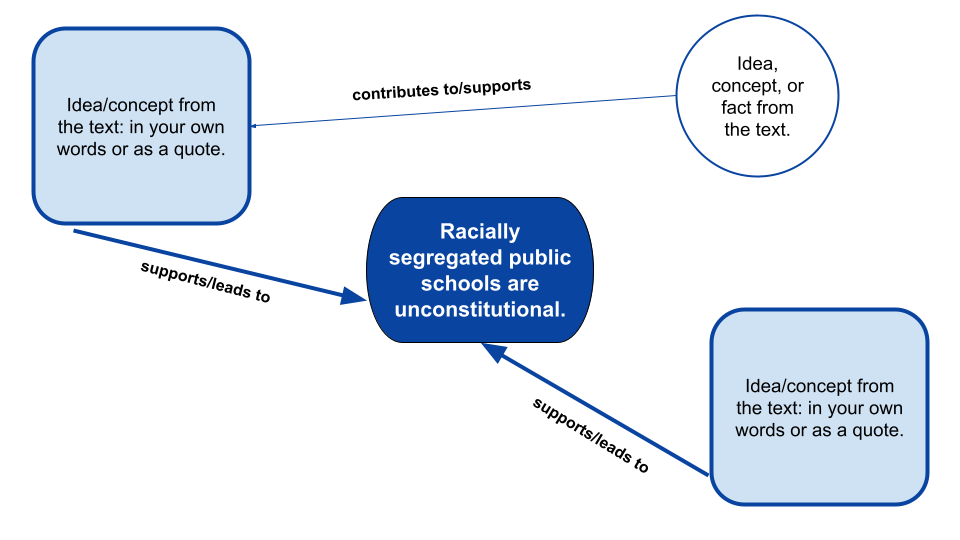20 Close and Critical Reading
Mariya Gluzman and Wynne Ferdinand
Introduction
Close and critical reading (CCR) skills are essential; they are not only required to succeed in school but to excel in one’s career. Often, students are simply expected to know how to read a complex text without ever being shown how to do it or being guided through the process. College assignments often mention “close reading of a text”, but most courses do not devote any significant amount of time to actually develop this skill.
Before evaluating students’ work that relies on their ability to read critically, students should be offered opportunities to develop critical reading skills via formative and low-stakes assessments.
CCR Skills
CCR is a set of related and sequential skills needed to engage with a text, understand, and analyze it. Close reading requires one to read the text carefully and deliberately, paying attention to word usage, structure, voice, and themes in order to make sense of its intended meaning. Being able to identify important terms and ideas is an important part of close reading.
To read critically means to understand how different ideas in the text relate to each other, to reconstruct any arguments advanced by the author and to evaluate those arguments, and to also offer critiques of the ideas and arguments presented in the text.
Reading and analyzing a legal text: a low-stakes critical reading assignment using guided digital annotation
This low-stakes assignment helps students master critical reading skills while learning to read legal documents and case files. In this sample activity designed by the Transforming the Justice Core Project team, the primary document of the Naim v Naim (1955) Virginia Supreme Court case is annotated using the Hypothes.is browser extension.
Activity purpose
The main purpose of this assignment is two-fold:
- To engage with a legal text on a deeper level;
- To master close reading skills required for higher stakes assignments in the course.
Course Learning Outcomes addressed by this assignment
- Contextualize and analyze struggles for justice.
- Analyze and explain a text or work using methods appropriate for the genre, medium, and/or discipline.
View the full activity (PDF)
Create a concept map for a reading: a critical reading activity
This sample activity created by the Transforming the Justice Core team is very flexible. It can be implemented as a group activity during a live in-person or synchronous class meeting, or completed asynchronously either by students working in teams or independently. It entails reading a text closely, extracting necessary information from it, and mapping it out using a basic concept map. This can be done using pen and paper or any number of digital technologies, from Microsoft PowerPoint or Google Slides, to Google Jamboard or Padlet.
Activity Purpose
The main purpose of this activity is to guide students as they apply CCR and visualization skills to foster a deeper understanding of a text.
The text
This activity uses the text of the decision rendered by the Warren Court in the Brown v Board of Ed landmark US Supreme Court case. This is a public domain text provided by the National Archives website.
The process
Provide students with a template of a concept map where the main idea from the text (or the one you want students to focus on) is identified. Provide 2-3 nodes for supporting ideas or concepts and ask student to find those in the reading and add them to the map by using their own words or by supplying direct quotes from the text.
Concept Map template

Creating a reading glossary
One important element of close reading is understanding all the words used in a text, especially any terms applicable to a particular discipline that the text represents. Some texts will provide definitions or explanations for most special terms, in some others, the meanings of these terms can be gleaned from the context in which the terms occur. And in others yet, it might be difficult to figure out the meaning, so a savvy reader would look up the definitions of those terms and practice using them.
Creating their own glossary can be an excellent active learning experience for students. In addition to figuring out how to define important terms and explain them in their own words, students will also develop a habit of stopping when they encounter an unfamiliar word and looking up its meaning before proceeding.
Activity purpose
The main purpose of this activity is for students to get into the habit of identifying special terms or words they do not understand and defining them for later use.
The text
For this activity, students are asked to examine a foundational text found in the Justice eReader, The structure and important features of the Supreme Court, which is a section in a chapter titled The Supreme Court and a Nation of Liberties.
The process
Ask students to go through this short text and pay attention to any special terms. Ask them to define a list of terms (below) as well as 2-3 additional terms that they were not familiar with by finding a definition/explanation in the text itself or by searching a dictionary or an encyclopedia. Once each student completes their glossary, they can either share it with their classmates via a peer-produced document (e.g. a Google Doc) or a course blog, or they can just submit it directly to the instructor for review.
Terms to define:
- SCOTUS
- chief justice
- associate justice
- appointment (to the court)
- law clerk